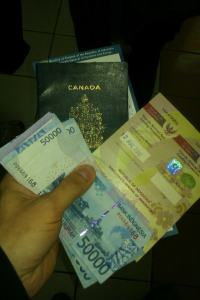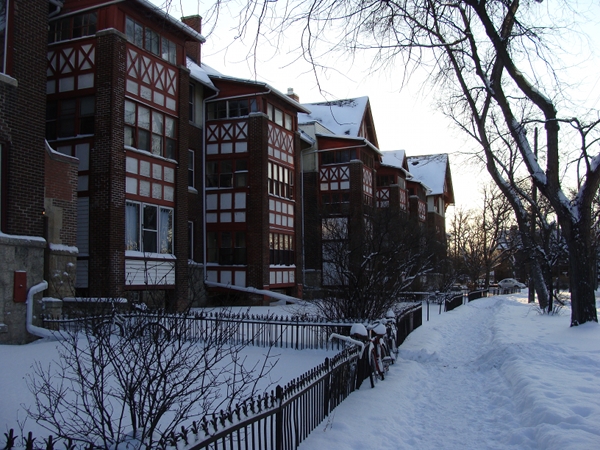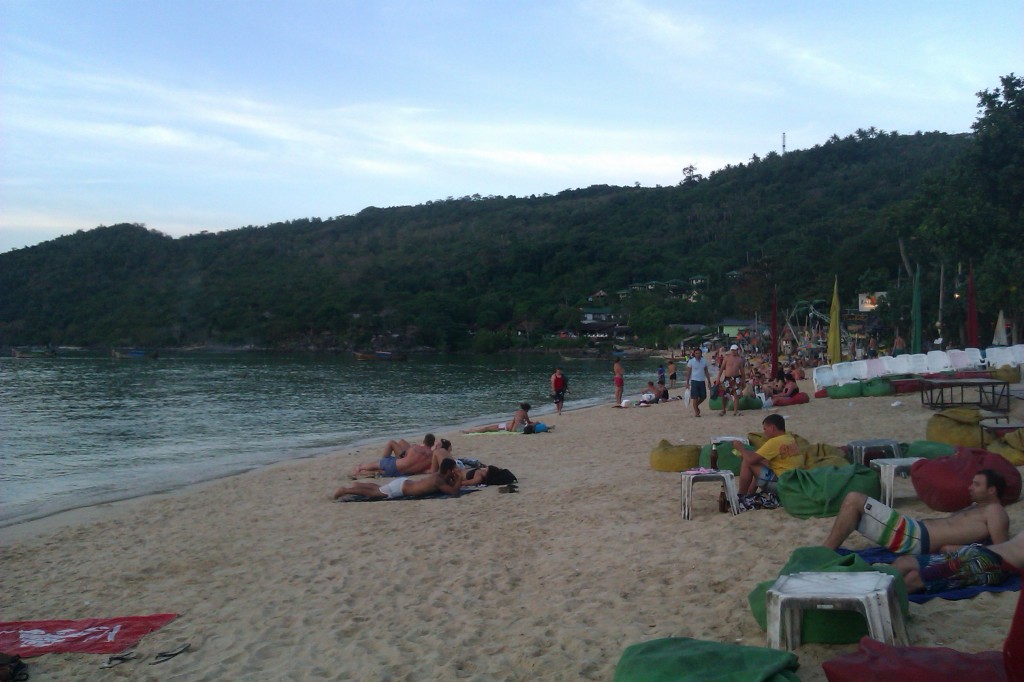Some folks were asking about what I take with me when I go backpacking. Since I’ve practically lived out of a backpack for three out of the last last four years, I can give you a pretty simple list of what to pack. The following is a general overview of what to pack when travelling abroad for extended periods of time.

Passport
Your international document. Photocopy and leave a copy with a trusted friend or family member. You may also wish to store it online somewhere with an encrypted key of some sort. Some folks like to email it to themselves and that is a basic form of digital archiving, but if you’ll be checking your email on unsecured networks then you’re exposing yourself to unnecessary risk. And be sure to check how long your passport is good for since most countries require your passport to be valid for another six months BEYOND your visit. You might also want to carry a few passport-sized photos if you’ll be applying for other visas as you go.
Money
It’s safe to say that you’ll need a few forms of money. First is your bank card. You’ll probably have your usual bank card, though you may opt to bring along a “cash passport” which can save you money on transaction fees and exchange rate losses. I know CAA in Canada offers one, but you’d have to ask your bank if they offer anything like it. Next, US money is the most commonly accepted currency around the world, followed closely by the Euro, so you’d be wise to carry a stash of that, and protect it well. Sew it into your clothing or backpack or whatever, but it’s wise to have that extra emergency “seriously, this isn’t for beer” money in a pinch. Finally, Mastercard/Maestro/Cirrus is accepted in most places but not everywhere and that’s where Visa can often come handy. If you have another card that you use at home it may be wise to apply for either a MC or Visa card before you go. You’ll find that cash is probably the easiest thing to pay with since some places may not have an ATM, a debit machine, or they may require a minimum purchase before they accept plastic payment. Some folks still use traveller’s cheques, but I’ve never had reason to use them. Have a few stashes of cash, protect it well, use a money-belt if you have to, but make sure you’re not left without hard cash.
Backpack
My main backpack is from Mountain Equipment Co-op and comes with a detachable daypack. I don’t know how many litres it is but it’s comfortable enough without being oversized. It cost me $100 and I’ve used it for nearly five years. Only recently the daypack started to rip a little. Further, by tying a colourful set of strings to the handle I always know which bag is mine. This $100 has probably gone the farthest. The best advice I can offer is to choose a backpack that feels good and has a padded “belt”, which helps transfer the weight of your pack onto your legs instead of your shoulders. The more expensive backpack you get means you’ll get more pockets, clips and strings.
Reading Material
Various books, magazines and local newspapers. I pick some up, keep some, throw away others. I like to keep my travel guides because they help remind me of where I’ve been. Plus, as a man interested in history, I would like to keep the travel guides of today so fifty years down the road I can look back at them and see what’s changed. Crazy, but it gets me through those days when I’m carrying two or three of them at one time, especially the larger, regional guidebooks. I like to keep my guidebooks so it does add extra weight before I’m able to ship it home. Call me sentimental, I guess.
Journal
I have a couple of notebooks that I take with me, one for personal thoughts and to keep track of the things I’ve done, and another for writing ideas (such as for this website). I addition to that, I do a lot of writing on my laptop and publish my on-going travelogue here on this website. Both are rather plain, the personal thoughts one has thick, art-sketch paper, while the other one is a regular, bound notebook.
Plastic bags
Although they are the bane of hostel life, they are a cheap, water-proof container for receipts, tickets and other items. I use these items to jog my memory in case I don’t get a chance to take notes as I go.

Cheap Clothes
I don’t buy any of those fancy “made-for-travel” gear because I assume that it will a) get stolen, b) get wrecked in the wash, and c) will function the same as simpler, cheaper clothing. I do like zippered pockets though, as they are harder to pick from (but not completely foolproof). I often carry two pairs of pants (one set of cargo pants, another pair of casual dress pants), two pairs of shorts (one cargo style, another swimsuit style), a bunch of underwear, a few pairs of socks, a pair of nice shoes, sandals/flip flops, a hoodie/sweater, some shirts, a towel, toiletries, and a few other odds and ends. It all fits into the big backpack I have and if it all goes missing, I don’t think I’d care too much. I swap these clothes out every three or four months. If you really want to travel light you could discard much of this list except for maybe two sets of clothes and then buy more weather-appropriate clothing at your destination (it’s really easy in places like Bali.) As a side note, I was told one time that I do have a style, it’s just a rather rugged, backpacker-type of style. I think it was a compliment.

Electronics
Depending on what you do or want to do, you might consider bringing a few electronics with you. I bring my laptop with me and do my best to secure it. If I don’t feel safe, I lock it up and carry either a phone or a simple notepad and pen. I bring along an external drive or two for archival purposes, mostly for my travel photos and videos. I also use some online backup services in case all of that goes missing. I also prefer to use a smartphone now, since they can often serve as a camera, a communicator, a WIFI connection, GPS and mp3 player. Oh, and I can also make notes on it.
First Aid
I also bought a small first aid kit which has come in hand some times, mostly because of the bandages and antibacterial solution. It includes a bunch of little implements to do very basic first aid, such as bandages, gauze, antiseptic, scissors, scalpel, thread (thank goodness I’ve never had to use this!), and some other bits. (NB: I lost this on my last trip and haven’t replaced it. Though a good idea, you’ll probably find that you won’t use much of what’s contained in those kits. However, if you’re going hiking or travelling a considerable distance from an urban area, you may want to pack one just in case.) I often carry iodine with me since it’s easier to find than other anti-septic solutions.